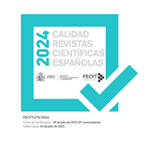La ELAO en el marco del enfoque por tareas
Resumen
La enseñanza de lenguas a través del ordenador (ELAO) puede tener lugar de dos maneras: (1) ELAO tutorial, donde el estudiante interactúa con los materiales digitales por su propia cuenta y (2) ELAO social, donde el ordenador provee el medio en el cual las personas llevan a cabo la comunicación a distancia. Cada ambiente aporta ventajas para el aprendizaje de una segunda lengua (2/L), especialmente si el marco pedagógico apunta a un enfoque por tareas (González Lloret & Ortega 2014). Los medios sociales y las videoconferencias han ampliado lo que se entiende por comunicación y pueden constituir nuevas estrategias para fomentar la adquisición de una 2/L. A la vez, no se deben minimizar los beneficios que ofrecen los programas/materiales de la ELAO tutorial, especialmente si se contempla lo difícil que es aprender un léxico adecuado y las colocaciones en una 2/L, junto con el desafío de controlar una nueva morfología y sintaxis. Por supuesto, hay que implementar estas nuevas tecnologías digitales de manera que sigan una autenticidad cultural y que se ajusten bien a las necesidades tanto del estudiante como del instructor (Hubbard 2006). En este estudio, se expondrán estos conceptos con ejemplos específicos de la Web 2.0, junto a sugerencias de cómo integrar las TIC dentro de un programa de 2/L con el enfoque por tareas.Descargas
Descarga artículo
Licencia
La revista Círculo de Lingüística Aplicada a la Comunicación, para fomentar el intercambio global del conocimiento, facilita el acceso sin restricciones a sus contenidos desde el momento de su publicación en la presente edición electrónica, y por eso es una revista de acceso abierto. Los originales publicados en esta revista son propiedad de la Universidad Complutense de Madrid y es obligatorio citar su procedencia en cualquier reproducción total o parcial. Todos los contenidos se distribuyen bajo una licencia de uso y distribución Creative Commons Reconocimiento 4.0 (CC BY 4.0). Esta circunstancia ha de hacerse constar expresamente de esta forma cuando sea necesario. Puede consultar la versión informativa y el texto legal de la licencia.











